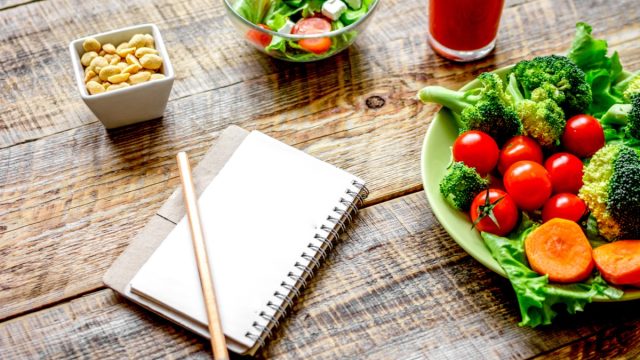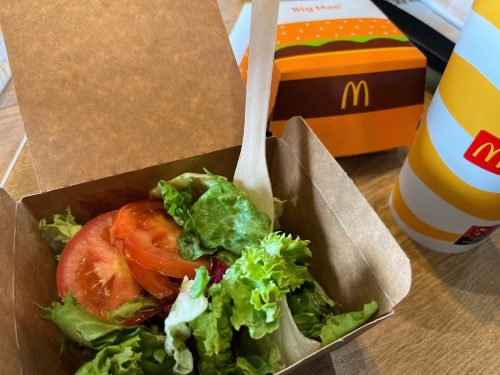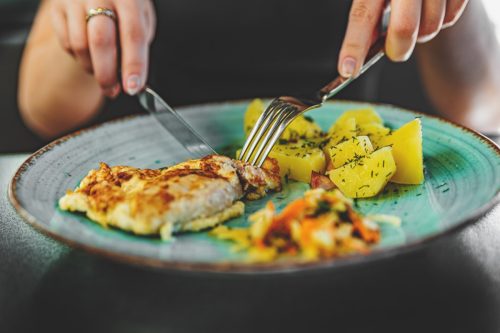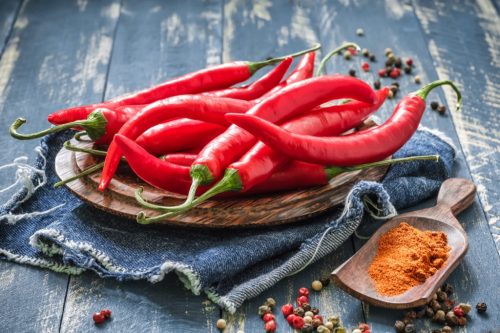The 10 Best Ways to Lose 10 Pounds Fast

How much weight can you lose in a month? For those who are trying to reach, and maintain, a healthy weight, it’s the eternal question: Can you lose 10 pounds in a month? While everyone loses weight at a different pace, and what’s healthy for one person may not be right for another, If you’re skeptical—and struggling to hit your goal weight—a few lifestyle tweaks could do the trick.
Eating healthy foods, getting plenty of aerobic exercise, and watching your calorie intake only go so far: Incorporating a few other easy, expert-recommended, science-backed tips into your routine can help you take those last steps on your weight loss journey.
When it comes to burning off those final 10 pounds, all you need to do is make a few key changes—alterations to your lifestyle so small you’ll barely notice. Master these 10 easily-implementable techniques and you’ll be rocking your dream body in no time. Read on to find out how you can lose 10 pounds fast, while still feeling great.
READ THIS NEXT: People Are Saying Ozempic Is a Weight-Loss Miracle. Is It Worth the Brutal Side Effects?
10 Ways to Lose 10 Pounds in One Month
1. Choose the side salad.

Cut back 100 calories per day, the thinking goes, and you’ll lose 10 pounds over the course of a year. And the easiest way to do that is with a simple side dish swap. A salad with all the trimmings—two cups of leafy greens, a cup-and-a-half of crisp veggies (like tomatoes or cucumbers), and two tablespoons of light dressing—amounts to a little over 100 calories. A medium order of fries has about 350. If you’re a habitual fry-eater, swap them for a salad just three times a week and you’ll slash 750 calories from your weekly diet—or about 100 per day.
2. Master the 80-20 rule.

It takes your brain about 20 minutes to “catch up” to your stomach—to realize that, hey, you’re full. Because of this, it’s incredibly easy to eat more calories than you need. A good way to stop doing this is to eat 80 percent of what you’d normally eat and then stop. 20 minutes later, reassess: Are you still hungry? If so, keep eating. Chances are you won’t be, and you’ll have just reduced your calorie intake by 20 percent. If you’re on a 2,500-calorie diet, that’s 500 calories just like that.
3. Pump some iron.

Did you know that having more muscle mass helps you burn more calories? It does—and it’s thanks to your metabolism, according to the experts at Verywell Fit. “Muscle doesn’t burn fat directly, but having more muscle mass means you burn more calories at the same body weight than if you had less muscle mass,” their experts write. “Muscle is metabolically active tissue that requires energy to maintain, where as fat tissue is not. The act of building muscle by strength training increases your calorie burn to help you burn fat as well.”
Gaining muscle doesn’t have to be an arduous slog. Phil Grau, Chief Science Officer at Blocks Nutrition, recommends getting it done early in the day: “Train, work out, or exercise first thing in the morning. This will not only increase energy levels, making you feel more alert and focused throughout the day, but also guarantees that at the very least you will have accomplished something positive for your health before the day has a chance to throw any curveballs,” he advises.
4. HIIT the gym.

If lifting’s not your thing, you could always try high-intensity interval training, or HIIT. Instead of lengthier, steady-as-she-goes workouts, HIIT is all start-stop-start-stop. For instance, maybe you sprint for two minutes and walk for one minute—and then repeat a few times. The goal is to push yourself toward exerting 80 to 90 percent of your energy without giving your body time to fully recover.
This method gets your heart rate up, kicks your metabolism into overdrive, and torches calories like nothing else—and, according to one study in the Journal of Obesity, is more effective at reducing “abdominal body fat than other types of exercise.”
5. Cut out soda—for good.

It’s also time to give up soda. Every 12-ounce soda contains 150 calories—so removing one per day from your diet will save you 1,050 weekly calories. And if you think that drinking calorie-free diet options are safe when it comes to weight-loss, think again: According to a study in the Yale Journal of Biology and Medicine, people who regularly drink diet soda actually end up gaining weight.
For a good substitute, drink iced tea—but don’t reach for the Lipton or Arizona just yet. That stuff is just as caloric as soda. Instead, if you brew your own iced tea (and don’t add any extra sweeteners), each twelve-ounce glass will amount to a scant three calories. Missing the sweet stuff? Grau recommends reaching for some berries to satisfy your sweet tooth. “Berries are low in calories and high in fiber, making them a perfect snack to satisfy a sweet tooth without overloading on calories,” he tells Best Life.
6. Get your nightly seven hours.

Skipping out on sleep bolsters your belly twofold. For one thing, if you’re sleep-deprived, chances are, you’re going to eat more. According to a study in the European Journal of Clinical Nutrition, people who get five-and-a-half hours or less each night eat 300 more calories the following day than people who get seven hours or more. And for another thing, sleep deprivation causes your cortisol levels to increase. Cortisol, if you didn’t know, is the hormone that your body uses to store fat. (You do the math.)
For more health news sent directly to your inbox, sign up for our daily newsletter.
7. If it’s winter, go skiing.

Two hours of skiing burns 984 calories. That’s more than a six-mile run! Considering a typical day of skiing lasts from about six to eight hours, you can incinerate thousands of calories and have a blast at the same time. So if it’s cold outside, consider taking a few runs—even if it hasn’t snowed in a while. These days, nearly every ski resort in the world is equipped with snowmaking equipment, so you have no excuse not to hit the slopes. And remember, if you can’t do crazy exercise, you can still keep your metabolism humming simply by moving around.
8. Start drinking your coffee black.

Think about your morning coffee. Do you drink it with cream and sugar? If so, that’s a 100-calorie beverage. But by taking it black, your daily dose of caffeine is only five calories. Sure, it’s bitter, but there’s an easy fix to that: Just add cinnamon. Not only is it delicious, but, per a study in Diabetes Care, a mere half a teaspoon of the stuff each day can keep your blood sugar and LDL cholesterol (that’s the “bad” kind) levels in check.
9. Turn up the heat.

According to research in the American Journal of Clinical Nutrition, folks who consume capsaicin—that’s the stuff in chili peppers that brings on the spiciness—ate 200 fewer calories during the following meal. What’s more, some experts say that spicy foods can speed up your metabolism, leading to more weight loss, though others assert there’s not enough evidence to support that. In any case, adding a dash of Sriracha to your next meal can’t hurt—unless you seriously can’t handle spice.
10. Get frisky.

Did you know that sex counts as a bona fide workout? Seriously! According to research out of the University of Montreal, you burn anywhere from 70 to 100 calories per “sex session.” In other words, having sex more frequently can directly lead to you having a better body. Curious about how long those “sessions” run? About 25 minutes, start to finish, including foreplay.
Best Life offers the most up-to-date information from top experts, new research, and health agencies, but our content is not meant to be a substitute for professional guidance. If you have health questions or concerns, always consult your healthcare provider directly.
- Source: https://www.ncbi.nlm.nih.gov/pmc/articles/PMC2991639/
- Source: https://news.yale.edu/2007/03/26/yale-researchers-weigh-science-soft-drinks-and-health
- Source: https://diabetesjournals.org/care/article/26/12/3215/21858/Cinnamon-Improves-Glucose-and-Lipids-of-People
- Source: https://pubmed.ncbi.nlm.nih.gov/19056576/
- Source: https://journals.plos.org/plosone/article?id=10.1371/journal.pone.0079342